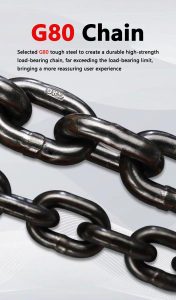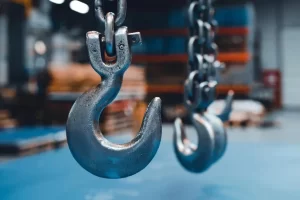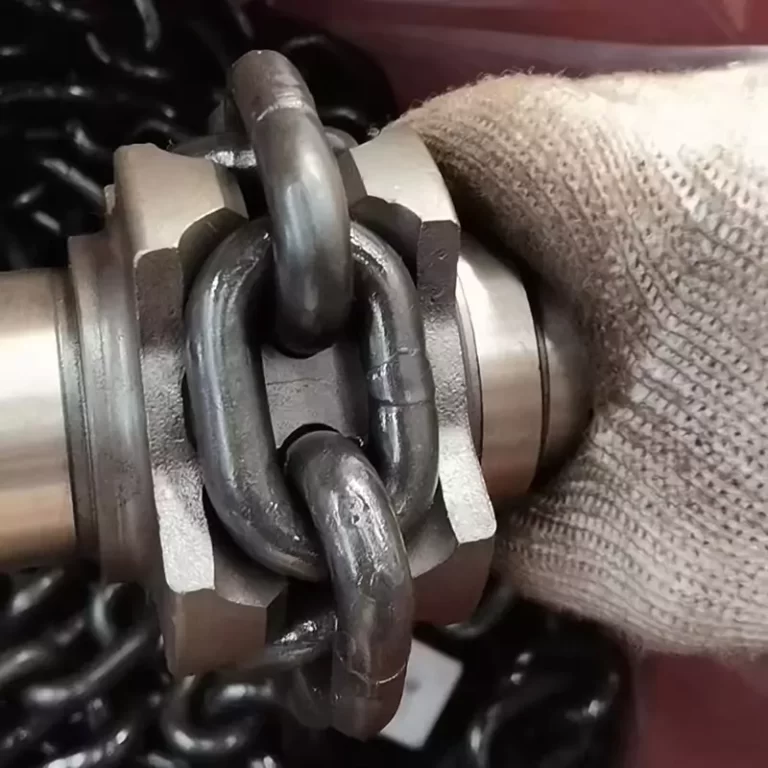When considering chains for various applications, the material chosen plays a crucial role in determining the chain’s strength, durability, corrosion resistance, flexibility, and overall performance. Chains are used in a wide array of industries, from automotive and construction to jewelry and fashion. The type of material selected is determined by the specific requirements of the job, the environment in which the chain will be used, and the performance standards expected.
1. Steel Chains
Steel is by far the most common material used for chains. There are several types of steel alloys, each providing different characteristics suited to particular needs. Steel chains are popular because of their strength, ability to withstand heavy loads, and resistance to wear and tear.
Carbon Steel Chains
Carbon steel is the most basic form of steel and is widely used in chain manufacturing. These chains are typically made from mild carbon steel, which offers an excellent balance between strength and cost. Carbon steel chains can handle high loads and are ideal for general-purpose applications.
- Advantages:
- High tensile strength, which makes them ideal for heavy-duty use.
- Cost-effective compared to other materials.
- Easily machinable, allowing for a wide variety of chain designs.
- Disadvantages:
- Susceptible to rust and corrosion if not properly maintained or if used in moist or wet environments.
- Less resistant to extreme temperatures.
Alloy Steel Chains
Alloy steel is a type of steel that has been alloyed with various elements such as chromium, nickel, and molybdenum to improve its properties. Alloy steel chains are used when higher strength, wear resistance, or heat resistance is required. These chains are often used in automotive, construction, and heavy-duty industrial applications.
- Advantages:
- Improved strength and resistance to wear and fatigue compared to carbon steel.
- Can be heat-treated to enhance hardness and toughness.
- Better performance in extreme temperatures.
- Disadvantages:
- More expensive than carbon steel.
- Still susceptible to corrosion, especially if not coated or treated.
Stainless Steel Chains
Stainless steel is an alloy of steel that contains a minimum of 10.5% chromium, which makes it resistant to rust and corrosion. Stainless steel chains are used in applications where resistance to environmental factors like moisture, chemicals, or salt is crucial. These chains are common in marine, food processing, and medical industries, where cleanliness and rust prevention are essential.
- Advantages:
- Exceptional corrosion resistance, especially in wet, salty, or acidic environments.
- High tensile strength and durability.
- Requires little maintenance due to resistance to rust.
- Disadvantages:
- More expensive than carbon or alloy steel chains.
- Can be more prone to wear and tear when exposed to high-stress environments.
2. Aluminum Chains
Aluminum is a lightweight metal, often used in applications where weight is a concern. Aluminum chains are less durable than steel chains, but they are highly resistant to corrosion and are ideal for use in environments where rust resistance is critical, but the weight factor is more important than strength.
- Advantages:
- Lightweight, making it ideal for applications where weight savings are critical (e.g., lifting, cargo).
- Corrosion-resistant, especially when anodized.
- Good resistance to high temperatures.
- Disadvantages:
- Lower tensile strength compared to steel, making it unsuitable for high-load applications.
- Prone to wear and deformation under heavy loads or stresses.
3. Bronze Chains
Bronze is an alloy made primarily of copper and tin, with various other elements added for specific properties. Bronze chains are particularly known for their superior resistance to corrosion, especially in marine environments. This makes them popular in boating, shipping, and other maritime applications.
- Advantages:
- High resistance to corrosion, especially in saltwater environments.
- Excellent durability and wear resistance.
- High resistance to fatigue and shock.
- Disadvantages:
- Expensive compared to steel or aluminum.
- Heavier than some other materials, making it less suitable for applications where weight is a concern.
4. Titanium Chains
Titanium is a high-performance material known for its impressive strength-to-weight ratio. Titanium chains are lightweight, strong, and resistant to corrosion. These characteristics make titanium chains ideal for high-end applications where strength, weight, and resistance to corrosion are essential, such as in aerospace or high-performance motorsports.
- Advantages:
- Extremely lightweight compared to steel and other metals.
- Exceptional strength and durability.
- Excellent corrosion resistance, even in harsh chemical or marine environments.
- Hypoallergenic, making it suitable for jewelry.
- Disadvantages:
- Very expensive, which limits its widespread use.
- Difficult to machine and shape, which can add to manufacturing costs.
- Less commonly available, which can limit its use in certain industries.
5. Nickel Chains
Nickel is often used as a coating or as part of an alloy in chain manufacturing. Pure nickel chains are relatively rare but are used in applications where a high level of corrosion resistance is needed. Nickel-coated chains, on the other hand, are common in environments where protection against rust, oxidation, and chemical degradation is necessary.
- Advantages:
- Excellent corrosion resistance, especially against acids and alkalis.
- High strength, making it suitable for heavy-duty applications.
- Resistance to wear, even under extreme operating conditions.
- Disadvantages:
- Can be expensive, especially if used in large quantities or high concentrations.
- Some nickel alloys are more brittle than other metals, which can impact their durability.
6. Plastic Chains
Plastic chains, often made from high-density polyethylene (HDPE) or polyvinyl chloride (PVC), are used in lightweight, non-industrial applications. These chains are not meant for heavy-duty loads but can be ideal for decorative or safety purposes. For instance, plastic chains are often used in crowd control, decorative fencing, or in low-load environments such as agriculture.
- Advantages:
- Extremely lightweight and flexible.
- Non-corrosive and resistant to weathering.
- Easy to handle and transport.
- Disadvantages:
- Very low tensile strength, making them unsuitable for heavy-duty tasks.
- Can be susceptible to UV degradation, which can make them brittle over time.
7. Copper Chains
Copper chains are used mainly in specialized applications, including in electrical work and certain types of decorative jewelry. Copper’s excellent conductivity and resistance to corrosion make it suitable for specific uses, particularly in environments where electricity or heat transfer is important.
- Advantages:
- Excellent electrical conductivity, which makes them ideal for use in electrical applications.
- Corrosion-resistant, particularly in non-oxidizing environments.
- Disadvantages:
- Softness compared to steel or titanium, leading to a lack of durability in heavy-load applications.
- More prone to wear and tear under heavy stress.
8. Composite Chains
Composite materials, typically a combination of metal and non-metal materials (such as plastic or carbon fiber), are increasingly used to manufacture chains that need to combine the strengths of various materials. For example, carbon fiber chains can provide high strength while being lighter than steel, or chains may use plastic coatings to enhance corrosion resistance.
- Advantages:
- Tailored properties, offering a unique blend of strength, lightweight, and corrosion resistance.
- Can be engineered for specific applications, such as reducing friction or enhancing durability.
- Disadvantages:
- Often more expensive due to the specialized materials.
- Manufacturing processes can be more complex.
9. Chain Coatings and Surface Treatments
Sometimes the choice of material is supplemented by coatings or surface treatments that enhance the chain’s properties. Common treatments include:
- Galvanization: A zinc coating is applied to steel chains to protect them from corrosion.
- Plating: Chains may be plated with nickel, chrome, or other metals to improve corrosion resistance and provide a polished appearance.
- Heat Treatment: Steel chains can be heat-treated to increase hardness, tensile strength, and fatigue resistance.

Conclusion
In conclusion, the material used in a chain determines its suitability for various applications. Steel remains the most commonly used material due to its strength, versatility, and affordability, but there are many other materials that can be used depending on specific needs. Stainless steel, titanium, bronze, and aluminum offer different advantages in terms of corrosion resistance, weight, and strength. Meanwhile, composite and plastic chains provide innovative solutions for lighter, more specialized applications.
The best choice of material depends on several factors, including the type of load the chain needs to bear, the environment in which it will be used, and cost considerations. Whether for industrial machinery, decorative jewelry, or high-performance engineering, selecting the right chain material is key to ensuring safety, efficiency, and durability.


